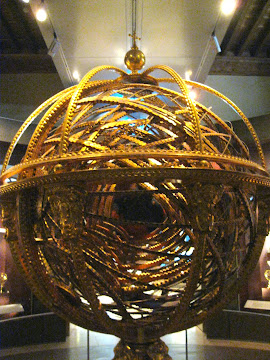June 12-13, 2014
It would certainly take a year to see most of the art in
Florence, and we only had 48 hours. Thankfully, we got a great start with our
Airbnb host who is half Australian-half Italian and really loves both the
history and the present city of Firenze. Walter gave us great hints of where to
go and what to see, where to eat, and other special little tidbits of
information. We arrived at noon on Friday and left at noon on Sunday – and we
jam-packed as much as we could into that time.
The oldest bridge in Florence (and the only one spared during WWII) is the Ponte Vecchio. I remember crossing it when I was 19 – and being amazed that there were stores on a bridge. I remember mostly shoes, purses and other leather goods, but my memory may fail me here. Now it is just one jewelry store after another. Oh – and a lot of tourists you need to elbow your way through. We usually took another bridge to avoid the shopping frenzy.
His Airbnb apartment was in a great area, and we could easily walk to the key visitor areas. It was historic, and also very fun, but the commode was up some steps and very tiny.
The tiny commode
The oldest bridge in Florence (and the only one spared during WWII) is the Ponte Vecchio. I remember crossing it when I was 19 – and being amazed that there were stores on a bridge. I remember mostly shoes, purses and other leather goods, but my memory may fail me here. Now it is just one jewelry store after another. Oh – and a lot of tourists you need to elbow your way through. We usually took another bridge to avoid the shopping frenzy.
The 4th largest cathedral in the world is the
Duoma started in 1296 and completed in 1436. The façade is more recent – 19th century. We
aren’t huge on cathedrals- like one of the guides we read stated “... until
you are ready to poke your eyes out with dry spaghetti” – but we have managed
to see the four largest just by chance.
The Duomo of Florence
We needed a drink after that experience so found a lovely
wine bar serving appetizers and sat outside under an awning to stay dry. By the
time we emerged, it was getting near closing time at the Academy of Arts
Gallery where Michelangelo’s David
stands a magnificent 13 feet high. We had passed the outside of the Academy
earlier and the line stretched around the block, but now we could walk right
in. It was worth every centime to gaze at the David in the diminishing crowds. There were also some unfinished
sculptures by Michelangelo and other Renaissance sculptors so you could see the process of
sculpting. Unbelievable.
 |
| The David |
Our apartment is right next to Santo Spirito square and
church, where a young Michelangelo carved the cross. Unfortunately, it wasn’t
there at the time. We did go to the impressive Museo Galileo that contains one of the world's largest collections of scientific instruments. The Renaissance featured both art and science... what a grand time that must have been!
We completely lucked into a parade for an annual medieval
football game called Calcio storico.
It is most similar to rugby and players wear crazy colorful clothes as the
nobles did in medieval times. The most important match was played in 1530 when
the Papal troops besieged the city and the Florentines played football instead
of responding to the attack. We are also here during the World Cup and Italians
are CRAZY for soccer. I was woken up three times last night – every time a goal
was scored.
Thankfully the Italians beat the Brit’s 2-1 so the mood today was
ebullient. And I wouldn’t have gotten much sleep if there were many more goals!
This morning, I watched the last game-winning goal as I was waiting to order
some patisseries (translate?). No one would take their eyes away from the
replay – but I enjoyed watching it too! It is fun to celebrate with exuberant
Italians!















































